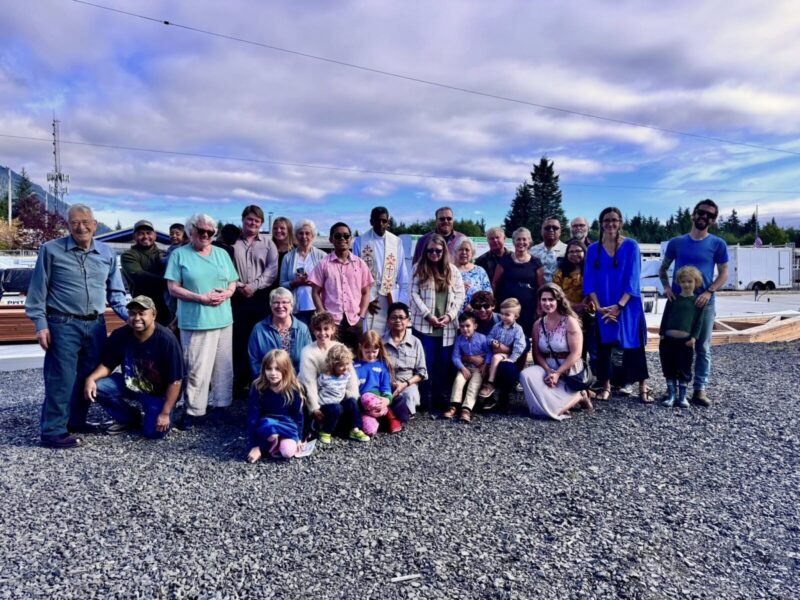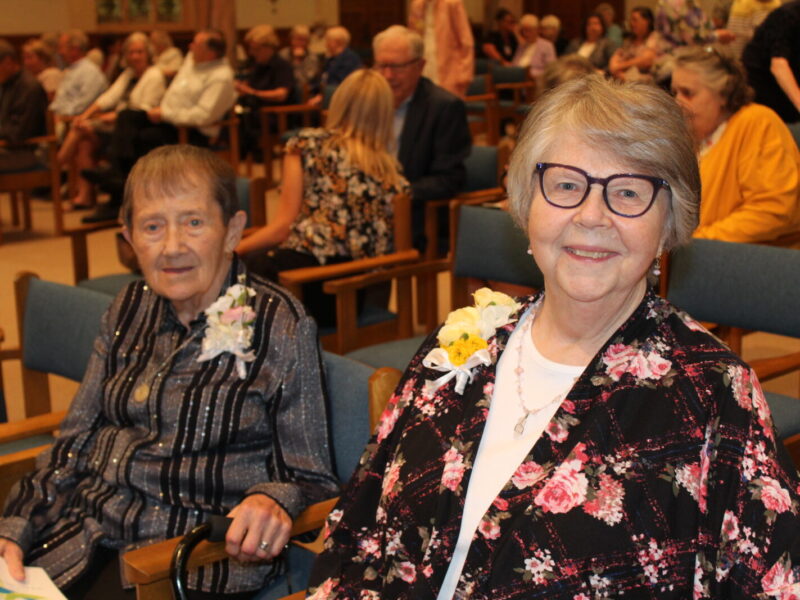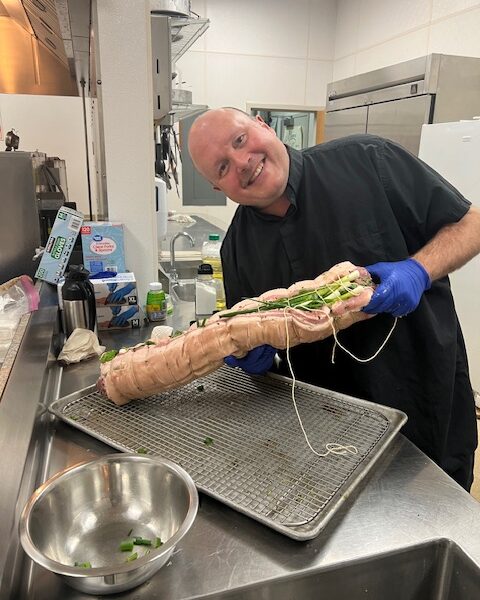ANCHORAGE, Alaska — Historical documents colorfully illustrate how the Catholic Church managed to reach the far corners of the Earth, but not much is said about the advancement of its Hispanic ministries — especially, in Alaska.
The Catholic Church in America is immigrant in nature. The church has been concerned about immigrants and refugees for more than three centuries in the United States. Immigration has been challenged by complex questions stemming from immigrant backgrounds, the receptive attitude of society, and the historical time of the arrival of immigrants.
In the early 20th century, the Catholic Church managed an incredible diversity of more than 25 language speaking groups. The institutional pastoral structures that were developed for the European immigrants were a successful strategy for inclusion in the larger Catholic community.
The newest immigrants are faced with the same challenges as in the past. Mexican people did not experience a welcoming spirit in many American Catholic parishes. Hispanics have a different cultural and socio-religious perspective that is rooted in faith, life, and language. Old pastoral strategies could not be applied when the new immigrants from Latin America, Vietnam, and Haiti arrived. In general, accommodating immigrants allowed inclusion and participation in one multicultural ecclesial community.
In 1969, the Sacred Congregation for Bishops created an instruction manual, “De Pastorali Migratorum Cura,” a Latin phrase meaning “the pastoral care of people who migrate,” that gave clear guidelines for bishops and pastors to adhere by. In No. 11, the document stated:
“Migrating people carry with them their own mentality, their own language, their own culture, and their own religion. All of these things are parts of a certain spiritual heritage of opinions, traditions, and culture which will perdure outside the homeland. Let it be prized highly everywhere.”
Expressing pastoral care in their mother tongue was recognized as a right for immigrant people, allowing them to share their mentality, thoughts, culture, and spiritual life in their native language. The same document in chapter three asked the episcopal conferences to assign priests for the study and direction of the spiritual care of these people.
Hispanic Ministry in the USA
In 1945, an office for the Spanish-speaking was established under the National Catholic Welfare Council (NCWC) in San Antonio, Texas. The National Conference of Catholic Bishops (NCCB) in 1969 established a division for the Spanish-speaking under the Department of Social Development.
Following the inclusion of Spanish-speaking church entities in the U.S., in 1972, the first National Hispanic “Encuentro,” a Spanish word meaning a “meeting,” called for even greater participation from Spanish-speaking leadership and those with decision-making roles at all levels within the Catholic Church.
The second National Hispanic Encuentro, in 1977, expressed the desire to promote a creative church that is more responsive, united, and spiritually alive.
The third Encuentro, in 1985, involved half a million Hispanics and led to the development of a pastoral plan for Hispanic ministry. As a result, in 1987, the National Pastoral Plan for the Hispanic Ministry was approved, giving priority at the diocesan, regional, and parish levels.
On November 15, 2000, the United States Catholic Conference published a document on Pastoral Care for Immigrants, Refugees, and Travelers, which rejected the anti-immigrant stance and called for conversion, communion, and solidarity. The document exhorted the bishops, priests, deacons, religious lay leaders, and parishioners to prepare themselves to receive newcomers. It also repeated Pope John Paul II’s message for World Day of Immigration in 2000, stating the Church hears the suffering of all who are uprooted from their own land, of families who are forcefully separated, and in a rapidly changing society are unable to find a stable home.
The fifth National Encuentro, convened in September 2018, dealt with the context of the new evangelization and emphasized the importance of involving young, second- and third-generation Hispanics and Latinos.
Hispanic Ministry in Alaska
Senior Hispanic members in Anchorage may remember having bilingual Mass in Holy Family Cathedral as early as 1973. After that, there were other attempts to have Spanish Mass in Anchorage, but nothing was stable.
However, in 1988, Hispanic community members desired Mass in their own language, which resulted in the formation of the Catholic Hispanic Ministry, or “Ministerio Católico Hispano.” Many Hispanics later became part of this group.
The committee petitioned Archbishop Francis Hurley for a Spanish-speaking priest, but the archdiocese could not afford it at that time. The Hispanic community responded by hosting fundraisers to gather the funds. The community managed to gather the $2,000 monthly cost to afford their own priest.
Between 1995-96, Fr. Michael Warfel, who is now bishop of Great Falls-Billings, Montana, was pastor at Our Lady of Guadalupe and brought about even more pastoral changes. Previously, the Hispanic community paid rent to use the church for prayers and worship. Having served in Kodiak, Warfel knew the Hispanic community, stopped charging them, and integrated them into the parish.
Following multiple years with a Spanish-speaking priest in Anchorage, the archdiocese welcomed Sister Veronica Rivas in 1996 to accompany the Hispanic community. Her arrival resulted in the growth of relationships and integration between the Hispanic community and English-speaking community. Rivas served the archdiocese until 2002.
In the following years, Fr. Dan Hebert accompanied the Hispanics in Our Lady of Guadalupe when he served as pastor. Frs. Alejandro Crosthwaite-Martinez. O.P, Joseph Sergott, O.P., Donald Bramble, O.P., and Paul Scanlon, O.P., served the Hispanic community at Holy Family and at Our Lady of Guadalupe. Fr. Dismus Sayre, O.P., currently serves the Hispanic community in the Holy Family Church.
Sisters Lorraine Reaume, O.P., (2006 -2012) and Patricia Gould (2012-2016) each served at Our Lady of Guadalupe as director of Hispanic ministry under the pastoral leadership of Fr. Vincent Blanco, which was a period of understanding the diverse cultures, cultural integration of the communities, and the spiritual unity of the parish as one family.
Meanwhile, Daniel Esparza, a member of the Catholic Hispanic Ministry from the beginning, served as the Hispanic ministry coordinator of Our Lady of Guadalupe from 2005-2018, and continues to be a link between the Archdiocese and the Hispanic community.
In addition, Fr. Dominic DeMaio, O.P., (2008-2012) and Sister Mary Peter, D.C., (2012-2019) served the Archdiocese of Anchorage as the director of Hispanic ministry, including many other lay leaders.
Hispanic Outreach throughout Alaska
As Hispanic communities grew in Alaska, Archbishop Emeritus Roger Schwietz envisaged Hispanic ministry efforts reaching every corner of the state due to many Alaskan Hispanics living as sheep without a shepherd. He shared this vision with Fr. Gregory Gay, C.M., then superior general of the Vincentians, and invited the Vincentians to the former Archdiocese of Anchorage in 2014. The purpose of the mission was to reach all the Hispanic communities dispersed throughout the state.
Vincentians, also called Lazarists, are members of the Congregation of the Mission (C.M.), priests and brothers founded in Paris in 1625 by St. Vincent de Paul. Their mission is to preach to the poor country people and train seminarians for the priesthood.
With the arrival of Archbishop Andrew Bellisario, C.M., then known as Fr. Andy, Archbishop Schwietz entrusted the Co-Cathedral of Our Lady of Guadalupe to the Vincentians since it had the largest Hispanic faithful.
In August 2016, Bellisario and Fr. Shijo Kanjirathamkunnel, C.M., traveled to Fairbanks to meet with Bishop Chad Zielinski about beginning the first Hispanic Outreach Ministry. A month prior, Fr. Gabriel Medina, C.M., arrived from Colombia to assist with Hispanic ministry efforts.
From 2016 through October 2021, Vincentians served the Hispanic community in Fairbanks, traveling every month for two weekends until a community of priests was brought from Argentina, who now serves in the Diocese of Fairbanks.
In January 2017, Kanjirathamkunnel joined the Vincentian Community in Anchorage. Archbishop Paul Etienne appointed him director of the Hispanic Outreach Ministry in Alaska, and Superior General Fr. Tomaz Mavric appointed Kanijirathamkunnel as the superior of the Vincentians in Alaska. He was also the parochial administrator of Our Lady of Guadalupe Co-Cathedral from July 2017 until June 2018.
Vincentians, living at the Co-Cathedral of Our Lady of Guadalupe, attend to the pastoral needs of the Hispanic community in Kodiak, traveling there one weekend a month since 2017. And since the Dominican community did not have a Spanish-speaking priest, the Vincentians celebrated Spanish Mass at the old Cathedral of Holy Family from July 2018 through July 2019.
In 2018, Fr. Shijo traveled to the Diocese of Juneau in Ketchikan, Sitka, and Juneau to assess the situation of the Hispanic communities there. However, due to the financial situation of the Diocese of Juneau, the Vincentians did not start the monthly visits immediately.
Fr. Hank Grodecki, CM., joined the community in July 2018 and was appointed pastor of the Co-Cathedral of Our Lady of Guadalupe. In January 2019, Fr. Humberto Aristizabal, CM., joined the community from Colombia. In March 2020, Kanjirathamkunnel was appointed director of the Hispanic Ministry of the Archdiocese of Anchorage-Juneau.
Because of the COVID -19 situation, pastoral visits to the outreach missions were not possible for a year. However, the visits resumed in March 2021. The only way to contact the communities was through Zoom video calls. Priests held two weekly online gatherings for prayer and spiritual formation since the beginning of the pandemic. Currently, the Vincentians serve the Hispanic communities outside Anchorage in Wasilla, Kodiak, Juneau, and Ketchikan.
Editor’s note: Fr. Shijo Kanjirathamkunnel expressed his apologies to anyone who may have served the Hispanic ministry in Alaska but was not mentioned.





'Hispanic ministry grows in Alaska, US'
Be the first to comment on this post!has no comments